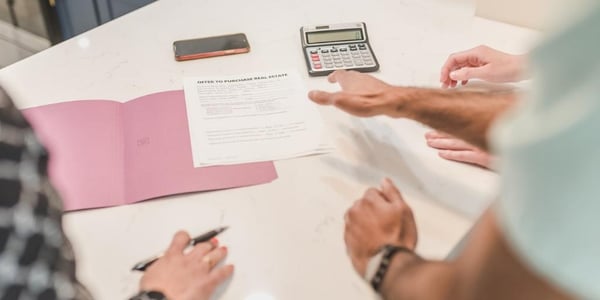A second home can encompass a variety of living arrangements. Whether you're considering a house,...


A second home can encompass a variety of living arrangements. Whether you're considering a house,...


One of the biggest challenges of family life can be when it is time for your young ones to leave...
Hydrotherapy, also known as water therapy, has been used for centuries to promote health and...
What Is Art Therapy? And What Are the Benefits?
Art therapy is a therapeutic practice that utilizes the creative process of making art to improve an individual's physical, mental, and emotional well-being. This form of therapy is based on the belief that the act of creating art can be healing and life-enhancing. Art therapy can be particularly beneficial for those 50+, offering a unique and expressive way to address various challenges associated with aging.
Understanding Art Therapy
Art therapy is facilitated by a trained art therapist who guides clients through artistic activities. These activities include drawing, painting, sculpture, and other forms of visual art. The goal isn't to produce a masterpiece but to express creativity, which can help individuals explore their feelings, reconcile emotional conflicts, encourage self-awareness, manage behavior, and develop social skills.
The Role of an Art Therapist
Art therapists are professionals trained in both art and therapy. They possess a deep understanding of psychological theories and the therapeutic properties of art. An art therapist provides a safe environment where individuals can express themselves freely without judgment. They help clients interpret the artwork and gain insights into their emotional and psychological states.
Benefits of Art Therapy for Aging Adults
Emotional Expression and Processing
Art therapy provides a safe outlet for expressing complex emotions that might be difficult to articulate with words. This can be particularly valuable as they navigate the emotional complexities of aging, such as loss, grief, and changes in health.
Cognitive Functioning
Engaging in creative activities stimulates various parts of the brain. This stimulation can improve cognitive functions such as memory, problem-solving, and critical thinking. Art therapy can be especially beneficial for individuals experiencing cognitive decline or dementia, helping maintain and enhance cognitive abilities.
Stress Reduction and Relaxation
Creating art can be incredibly relaxing and meditative. It allows individuals to focus on the present moment, reducing stress and promoting relaxation. This can lead to lower levels of anxiety and improved overall mental health.
Social Interaction and Community Building
Group art therapy sessions promote social interaction and a sense of community. Participants can share their experiences and creations, building connections with others. This social engagement is crucial for combating loneliness and isolation.
Enhanced Self-Esteem and Confidence
Completing an art project can provide a sense of accomplishment and pride. This boost in self-esteem and confidence can be particularly empowering for those who may feel a loss of purpose or independence.
Physical Benefits
Creating art can also have physical benefits. Activities like drawing, painting, and sculpting can improve fine motor skills and hand-eye coordination. This is particularly beneficial for individuals with arthritis or other physical limitations.
How Art Therapy Works
Art therapy sessions are designed to address individual needs and abilities, making each experience unique. Here’s a more detailed look into how art therapy works, from the initial assessment to the integration of insights gained during the creative process:
Initial Assessment and Goal Setting
The art therapist starts with an initial assessment to understand the client’s background, current emotional state, medical history, and specific needs. This assessment can include conversations about the client’s interests, previous experiences with art, and any particular issues they wish to address through therapy. Based on this information, the therapist helps the client set achievable goals. These goals can range from improving emotional regulation and reducing anxiety to enhancing social skills or boosting cognitive function.
Creating Art
The heart of art therapy lies in the creation process. Clients make art using a variety of materials, such as pencils, paints, clay, or digital tools. The therapist might suggest certain activities or themes but always encourages clients to express themselves freely. This stage is crucial as it allows clients to externalize their thoughts and feelings. Choosing colors, shapes, and forms can reflect the client's inner world and help them communicate what might be difficult to express verbally.
Reflection and Discussion
After the art-making session, clients and therapists engage in a reflective discussion. The therapist guides the client in exploring the meaning and emotions behind their artwork. This conversation is not about critiquing the art but about understanding the personal significance of the images and symbols used. The therapist might ask open-ended questions like, "What does this color represent to you?" or "How did you feel while creating this part of the artwork?" This reflection helps clients gain deeper insights into their emotional and psychological states.
Integration of Insights
The insights gained from the art and the reflective discussion are integrated into the client's broader therapeutic journey. The therapist helps clients connect these insights to their everyday lives and challenges. For example, a client who creates a chaotic and disordered image might realize this reflects their current feelings of anxiety and stress. The therapist can then work with the client to develop coping strategies or techniques to manage these emotions. This integration helps clients apply what they've learned about themselves through art to improve their overall well-being.
Revisiting and Progress Evaluation
Art therapy is an ongoing process, and revisiting previous artworks can be a powerful way to evaluate progress. Clients and therapists can look back at earlier pieces to see changes in themes, styles, and emotional expressions. This retrospective view helps clients recognize their growth and the shifts in their emotional and psychological states. It also allows therapists to adjust the therapeutic approach based on the client's evolving needs.
Click here or the button below to open a Boost Savings Account with Dort Financial Credit Union!
Art Therapy Techniques
Various techniques are used in art therapy, each with its unique benefits. Some common techniques include:
Free Drawing and Painting
Clients are encouraged to draw or paint whatever comes to mind. This spontaneous expression can reveal subconscious thoughts and feelings, especially for those who struggle to articulate their emotions.
Collage Making
Assembling materials like paper, fabric, and photographs into a new image can be therapeutic. This tactile technique is ideal for those who find it challenging to start with a blank canvas and allows for engaging exploration of emotions and experiences.
Sculpture
Creating three-dimensional objects with materials like clay provides a tactile and grounding experience. This hands-on approach is beneficial for expressing complex emotions and connecting with the physical self.
Guided Imagery
Clients visualize specific scenarios or emotions and then express these through art. This technique helps access and process buried emotions safely. For example, visualizing a peaceful place and creating art based on that image can reduce anxiety and promote relaxation.
Mandala Art
Creating mandalas, which are intricate circular designs, can be a meditative and calming process. This technique is often used to promote relaxation and mindfulness.
Art Journaling
Clients regularly create and reflect on their art in a journal, combining visual and verbal expression. This ongoing practice enhances self-awareness, tracks progress, and provides insights into emotional states.
Collaborative Art
In group settings, participants work together on a shared art project. This facilitates social interaction, communication, cooperation, and a sense of community, reducing feelings of isolation.
How to Get Started with Art Therapy
If you’re interested in exploring art therapy, here are some steps to get started:
Find a Qualified Art Therapist
Look for a certified art therapist with the appropriate credentials and experience. You can find art therapists through professional organizations like the American Art Therapy Association (AATA), healthcare providers, mental health clinics, or community centers. Verify their qualifications and ensure they have experience working with your demographic.
Consider Your Preferences and Needs
Think about the types of artistic activities you enjoy or would like to try, such as painting, drawing, or sculpting. Discuss these preferences and your therapeutic goals with your art therapist to tailor the sessions to your interests and needs.
Create a Comfortable Space
Whether attending in-person sessions or doing art therapy at home, ensure you have a comfortable and inspiring space. This includes having a variety of art supplies, good lighting, a quiet environment, comfortable seating, and storage for materials. A dedicated space enhances focus and enjoyment.
Be Open and Patient
Art therapy is a process that takes time. Approach it with an open mind and patience. The benefits may not be immediately apparent, and it can take several sessions to notice changes. Trust the process and give yourself permission to explore and express yourself without judgment.
Engage in Regular Practice
Consistency is key. Try to engage in art-making regularly, whether through scheduled sessions or independent practice. Keeping an art journal can help document progress and reflect on your emotional journey, deepening the therapeutic effects.
Art therapy is a powerful tool for enhancing well-being. It offers numerous benefits, including providing a means of expression, promoting cognitive functioning, reducing stress, promoting social connections, and boosting self-esteem. It can be a valuable addition to holistic care, helping to navigate the challenges of aging with creativity and resilience.
Click here or the button below to unlock higher earnings with a Money Market Account from Dort Financial Credit Union.
Living50+